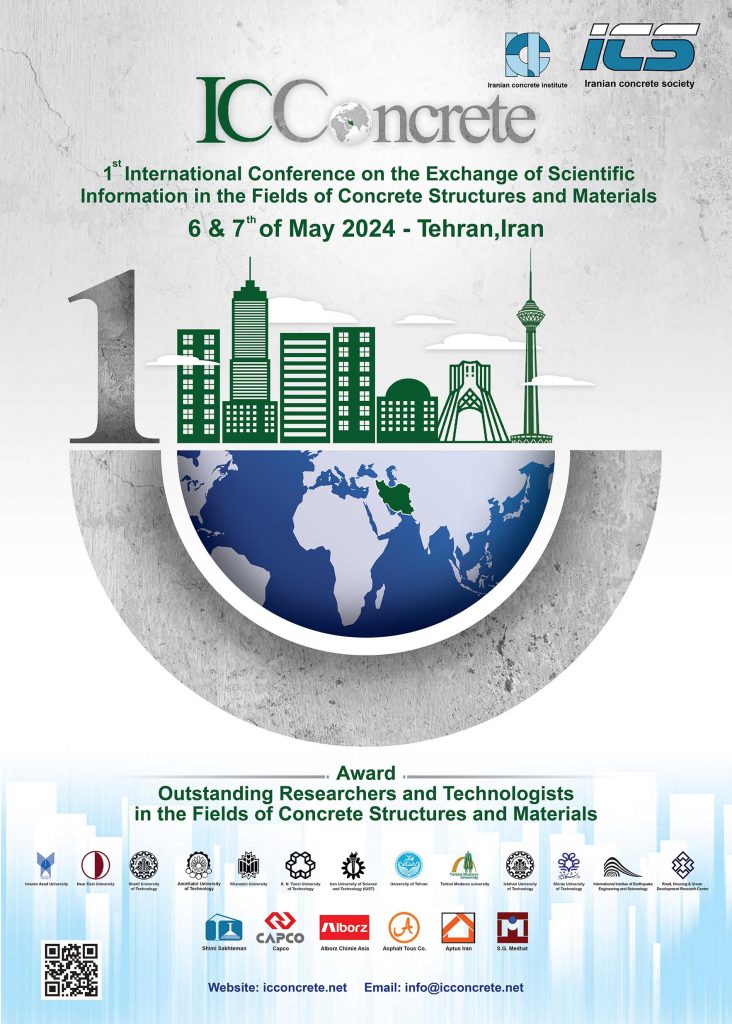

تارنمای معاونت پژوهشی دانشکده مهندسی عمران
تارنمای معاونت پژوهشی دانشکده مهندسی عمران

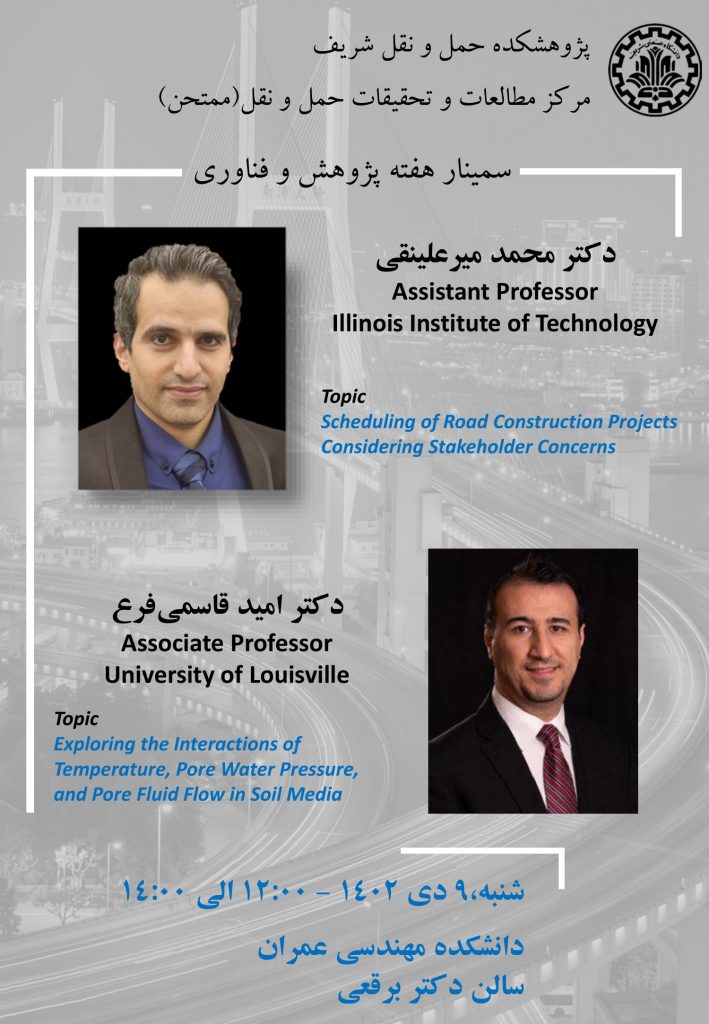
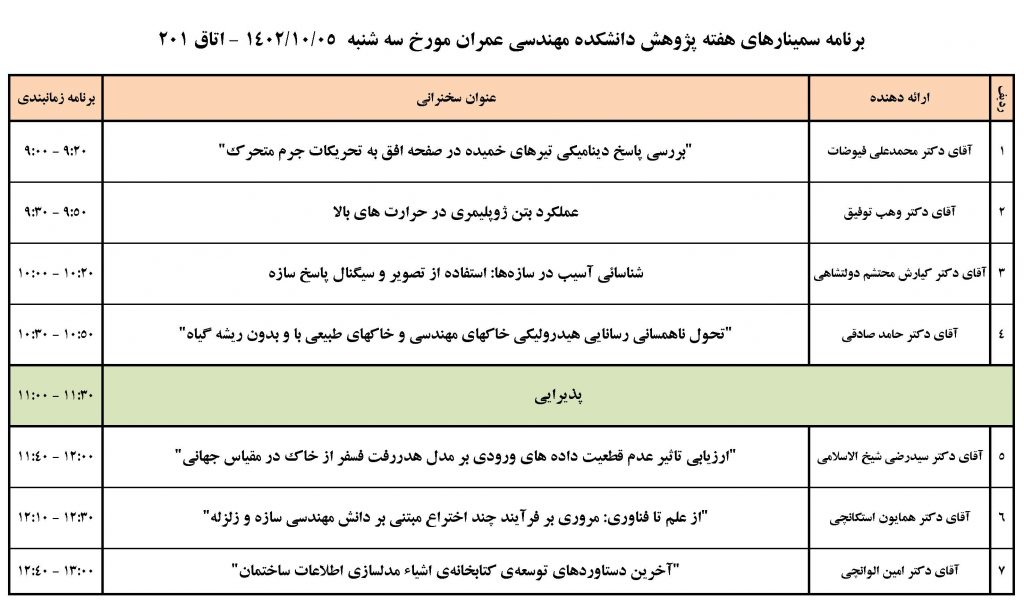
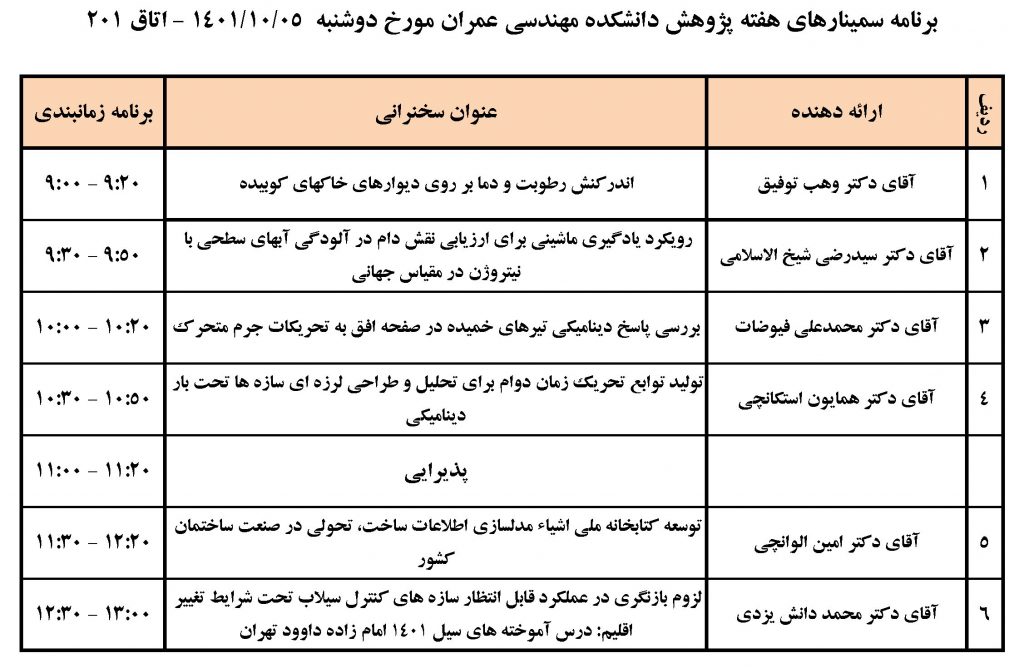
شرکت برای عموم علاقه مندان آزاد است.
Kianoosh Taghizadeh (University of Twente, NL – University of Stuttgart, DE)
k.taghizadehbajgirani@utwente.nl
(Hosted by Professor Pak)
Abstract: Complex mixtures with more than one particle species can exhibit enhanced mechanical properties, better than each of the ingredients. The interplay of soft with stiff particles is one reason for this. The focus of this work is the investigation of elastic and dissipative behavior of isotropic, dense, mixed (soft-stiff) assemblies. In particular, the attention is devoted to the effect of microscopic parameters (e.g. stiffness, friction, cohesion) on the macroscopic response (e.g. elastic moduli, attenuation). The research methodology combines experiments, numerical simulations, theory. The study of wave propagation in granular materials allows inferring many fundamental properties of particulate systems such as effective elastic and dissipative mechanisms as well as their dispersive interplay. Measurements of both phase velocities and attenuation provide complementary information about intrinsic material properties. Soft-stiff mixtures, with the same particle size, tested in the geomechanical laboratory, using a triaxial cell equipped with wave transducers, display a discontinuous dependence of wave speed with composition. The diffusive characteristic of energy propagation (scattering) and its frequency dependence (attenuation) are passed into a reduced-order model, a master equation devised and utilized for analytically predicting the transfer of energy across a few different wavenumber ranges, in a one-dimensional chain.
Bio: Kianoosh completed his B.Eng degree in mechanical engineering at Malek-Ashtar University of Technology, Iran. He received his M.Sc degree in Computational Materials Science from Technical University Bergakademie Freiberg, Germany, where he worked with the applied mechanics and solid mechanics group chaired by Prof. Meinhard Kuna.; and his master thesis was awarded the DAAD prize. After completing his master studies, he received a Marie Curie fellowship for his Ph.D in the multi-scale mechanics group, Faculty of Engineering Technology (ET), chaired by Prof. Stefan Luding at the University of Twente, Netherlands. His interests in granular materials evolved from his dissertation research on “Elasticity and Wave Propagation in Particulate Systems”. Currently, he has been engaged in developing models to describe their static and dynamic behaviour of granular systems as a post-doc fellow (funded by DFG-Schwerpunktprogramm- SPP 1897), in the Continuum Mechanics group, faculty of Civil and Environmental Engineering, at the University of Stuttgart, Germany, chaired by Prof. Holger Steeb.
Monday, 9/10/1398, 12:00-13:00 p.m., Room 202, Civil Engineering Department
Dr. Saeid Saidi, PhD
Assistant Professor
Department of Civil Engineering
University of Calgary
(Hosted by Dr. Amir Samimi)
Bio:
Dr. Saeid Saidi is an Assistant Professor in the Department of Civil Engineering at the University of Calgary. Prior to join the University of Calgary, he was a Postdoctoral Associate at the Institute for Data, Systems and Society (IDSS) at Massachusetts Institute of Technology and a member of the MIT Transit Lab. He earned his PhD and MSc in civil engineering with transportation engineering and planning specialization from the University of Calgary. He received his bachelor degree in industrial and system engineering from Sharif University of Technology. His main research activities are on transportation network modeling, public transportation planning and operation, and big data analytics using mobility sensing data. He is a member of Rail Transit Systems Committee (AP065) at the Transportation Research Board of the National Academies.
Abstract:
In this research seminar, a train following model is introduced which can efficiently capture the effects of train interactions in an urban rail line. The train following model is based on the estimation of induced delay for a train closely following a lead train, and is derived from empirical analysis based on historical track circuit data. Based on an analysis of sequential train delays, a train state prediction model is developed which can be used to predict the behavior of the system with respect to changes in initial conditions (e.g. scheduled headway, headway variation or dwell time) and disruptions. The performance analysis using this train following model is richer and more accurate than that from analytical macroscopic models while not being as time- and resource- intensive as a detailed micro-simulation model. The development and potential application of this model is demonstrated for the Massachusetts Bay Transportation Authority (MBTA) Red Line. The model can be used for both real-time control and offline operational strategy analyses.
Date:
Sunday, 22 December 2019
12:00 – 13:00
Venue:
304 Civil Engineering Department
Sharif University of Technology
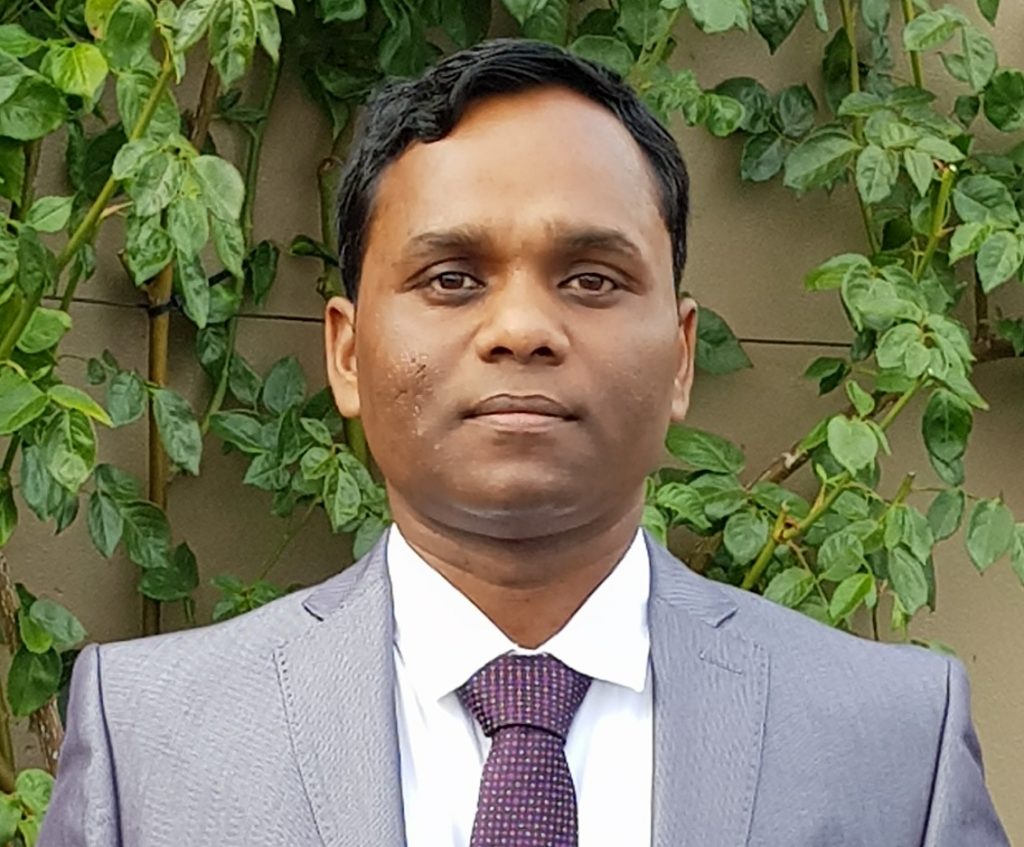
Dipti Ranjan Sahoo
Associate Professor, Department of Civil Engineering ,Indian Institute of Technology Delhi,New Delhi- 110016 (INDIA)
E-mail: drsahoo@civil.iitd.ac.in , http://web.iitd.ac.in/~drsahoo/
(Hosted by professor Khaloo)
Dr Dipti Ranjan Sahoo is an Associate Professor in the Department of Civil Engineering at Indian Institute of Technology (IIT), Delhi. He received his Ph.D. in Civil Engineering from IIT Kanpur in 2008 and worked as a Postdoctoral Fellow at the University of Texas at Arlington, USA during 2008-2010. His research interests are seismic design and behavior of steel structures, Passive vibration control and performance-based seismic design. He is a recipient of the prestigious Indian National Academy of engineering (INAE) Yong Engineer Aware, Institution of Engineers (India) Young Engineer Award. Department of Atomic Energy Young Scientist Award, and Department of Science and Technology Young Scientist Award. He has published more than 200 research articles in the reputed International and National Journal and Conferences. He has already supervised 7 Ph.D. dissertations and more than 100 Masters and Bachelors project and is currently guiding 11 Ph.D. students. He is the Associate Editor of Indian Society of Earthquake Technology (ISET) Journal and for the revision of Indian Standard codes for the revision of Indian Standard codes for design of reinforced concrete and prestressed concrete structures.
Abstract
Passive energy dissipation technique is widely adopted in the design practices to improve the seismic performance of structures. Metallic dampers are considered as one of the cost-effective passive devices available till date. This seminar was focused on the recent advances on the various types of metallic dampers and their applications in seismic retrofitting of structures. Specifically, Buckling –restrained braces (BRBs), Shear and flexure yielding devices (SAFYDs), and Steel Plate Shear walls (SPSWs) were discussed in detail. The applications of these device in controlling the seismic collapse of deficient non-ductile RC frames will be presented. The seminar also touched upon the real-time hybrid simulation and testing technique to evaluate the seismic performance of structures. Finally, the scope and funding availability for higher studies at Indian Institute of Technology (IIT) Delhi were presented in the seminar.
